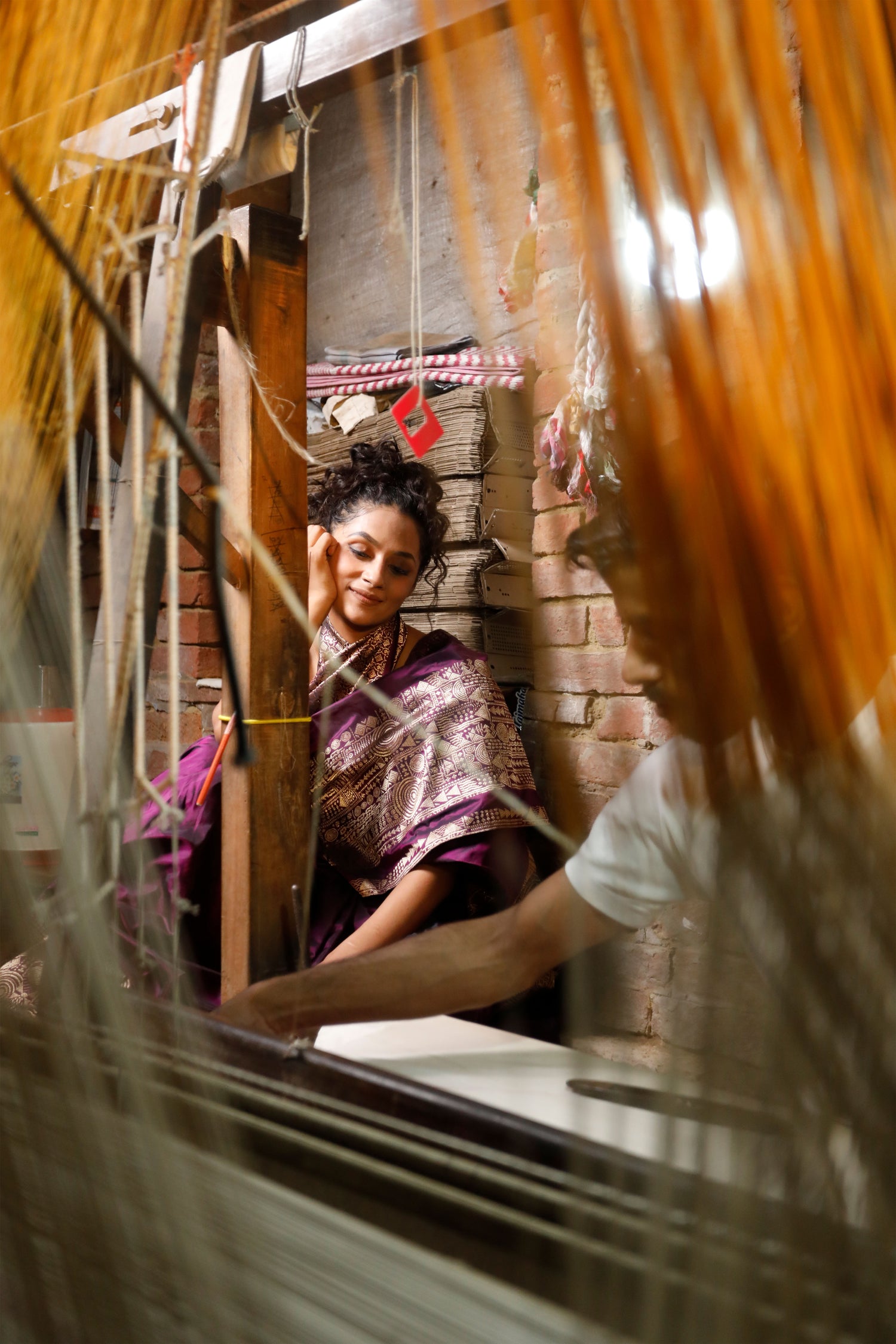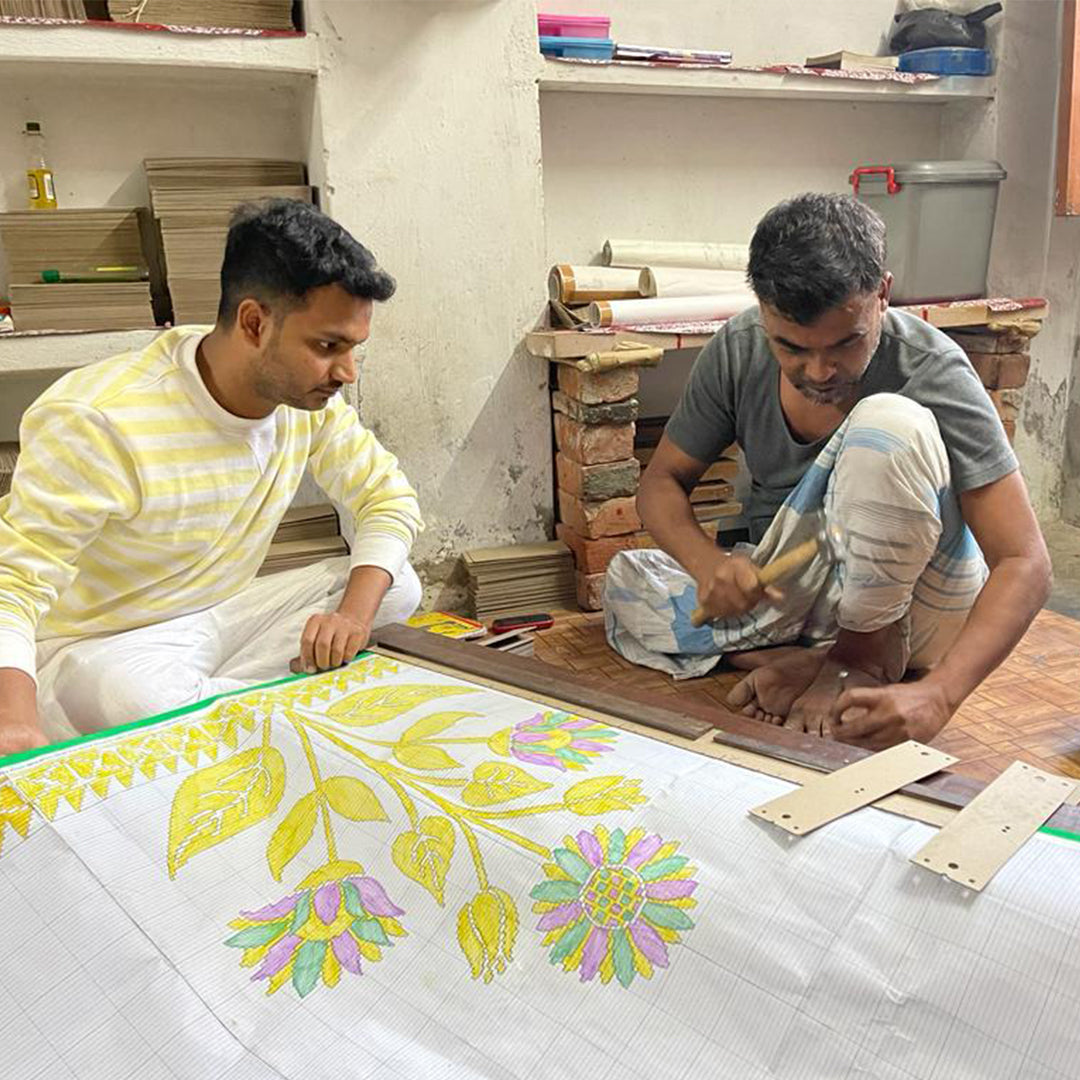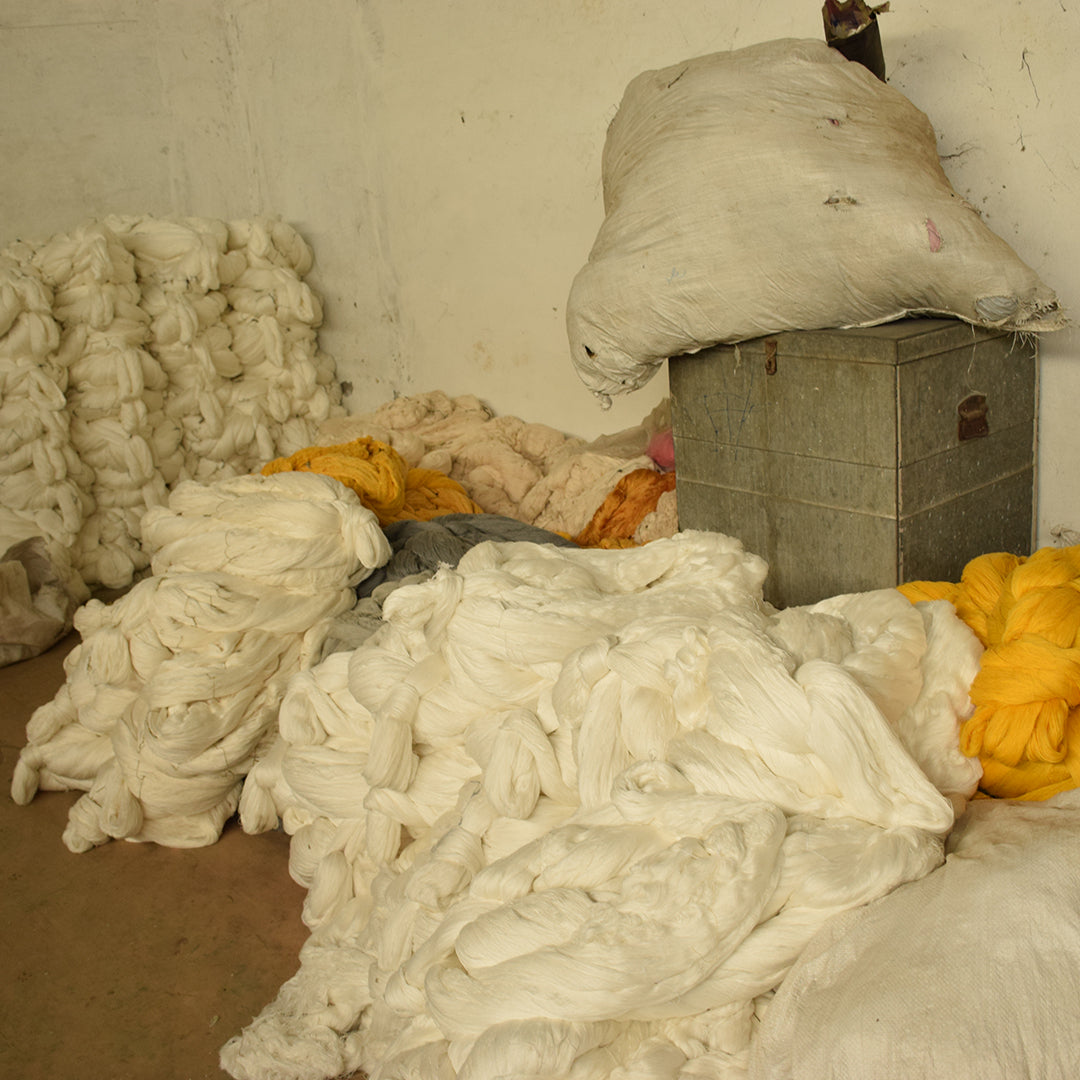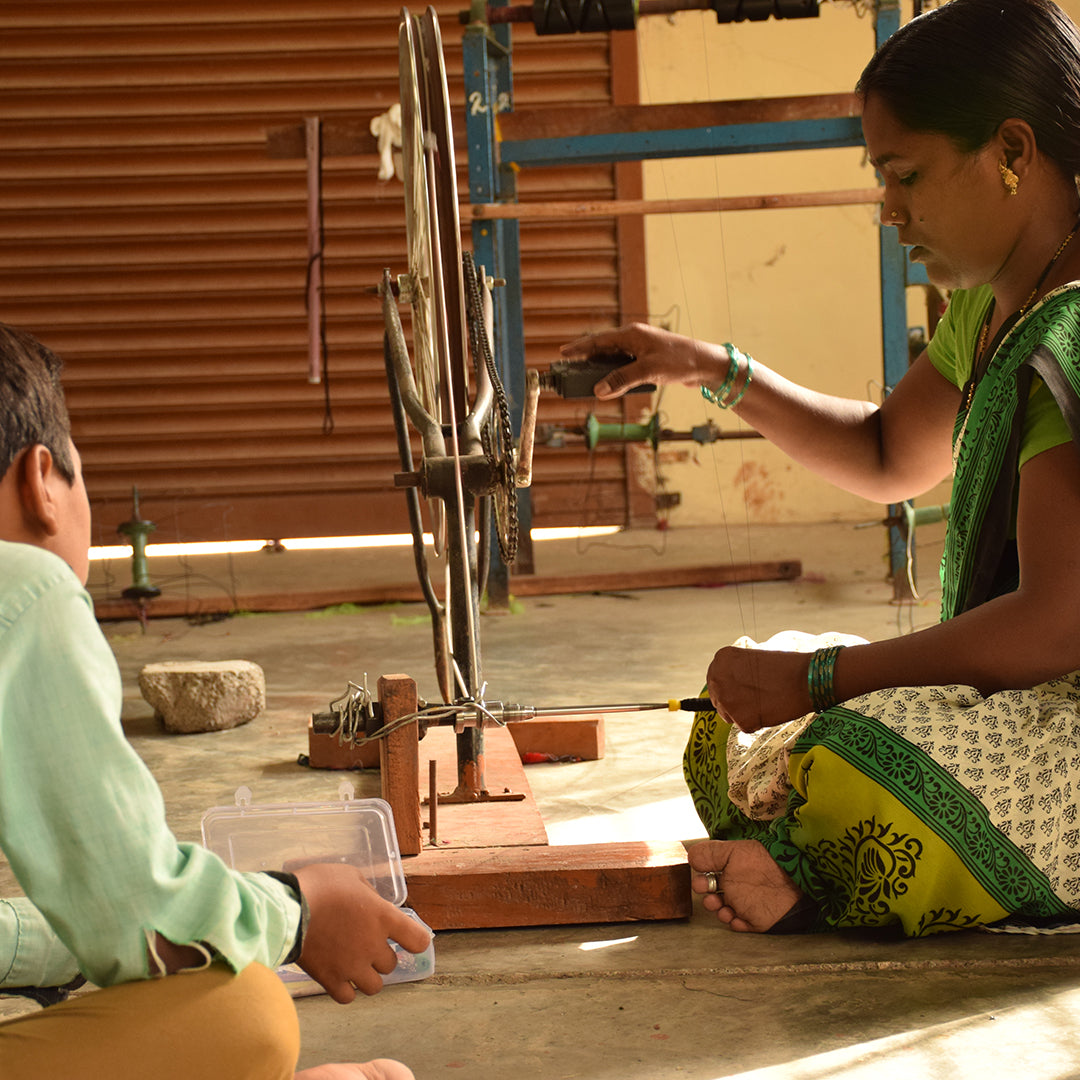
Introduction
What is the first thought that comes to your mind when you hear Banaras? It must be ‘Handloom Banaras saris”! These Handloom saris are not just famous in India alone, they have gained overseas fan following as well! (thanks to the rising NRI community and Bollywood Movies).
These sarees are known to be the finest sarees manufactured in India. Made in the city of Varanasi, Uttar Pradesh, these sarees are a must have every Indian woman’s’ wardrobe! In fact, an Indian bride’s wedding collection is incomplete without these royal drapes of silk! If you want present a woven a time-less gift, you have no better options that a beautiful Banaras Sari done up in gold and silk! Weavers of Indian Bansari silk sarees took inspiration for designs from jasmine, Thousands of Emeralds, Marigold flower, Betel nut leaf, Diagonal stripes, corner-motif with a mango flower etc. The uniqueness further added by the clang of temple bells, chants, humans, often infused with the asanas of mosque. We can see that the members of Varanasi’s large weaving community are made of both Hindus and Muslims working together irrespective of the difference in religious beliefs.
History of Banarasi sarees
There’s no debating the fact that Banaras has been an important centre for weaving since time immemorial. But it was Mughal Emperor Akbar who gave the weaving industry. He had many of his wives and those from his harem wrapped in rich silk sarees with Zari work. And this is what we today popularly (14th century) gave rise to the weaving of brocades with intricate designs using gold and silver threads. And it became the Banaras stamp of distinctiveness. Silk weavers from Gujarat, during the famine of 1603, migrated here, and most probably silk brocade weaving began in Banaras in the seventeenth century, it reached its peak, during the 18th and 19th centuries.
Weaving Process
The very basic component of making of any fabric even the sarees is thread or yarn i.e., along continuous length of interlocked fibres suitable for use in the production of textiles. These yarns are clubbed together in a format to get a fabric. The process of “clubbing in a format” of yarns is known as weaving and this process takes place with the help of a machine called loom.

- The saree designs are first created on paper the pattern is literally punched into paper, making it look much like braille. A Separate pattern guides each row and hundreds of patterns, (naksha patras), are created for a single saree.
- A large sheet of brown card is cut to rectangle sheets
- Rectangle sheets are punched according to the design on the graph paper which is called as jacquard cards.
- The jacquard cards are tied together comprising of design that needs to be seen on the saree.

- The yarns come in raw form in the market which is then processed and separately dyed by the dyer to get the colour of choice.

- Warp and weft preparation
- Another set of threads are rolled to spindles with helped of spinning wheel which becomes the weft threads.

- Threads are segregated and warp beam is loaded

- The handloom is set up and the process of warp and weft creates the saree and jacquard card helps in creating the designs.

